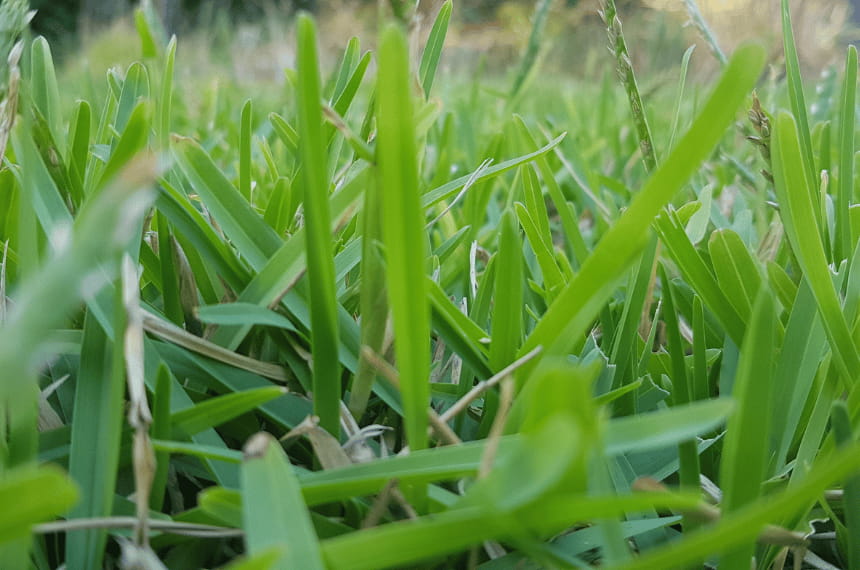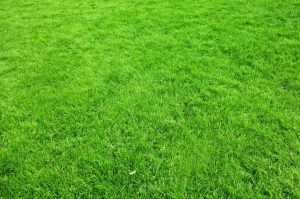Are you fed up with barren patches on your lawn or with unruly grass runners taking over your garden? Managing Buffalo grass runners can be difficult, especially if you don’t know where to begin.
Our comprehensive guide is intended to demystify buffalo grass runners and provide you with the skills you need to effectively control them. Dive right in and let’s give your grass the attention it deserves!
What is a runner (stolon)?
A runner, also known as a stolon, is a horizontal stem that grows above or beneath the soil’s surface. It is produced by some plants and serves as a means of vegetative reproduction, allowing the plant to spread and establish new growth in different areas. In the case of buffalo grass, runners are one of the primary ways the grass spreads and creates a dense turf.
While runners can be beneficial for establishing a healthy lawn, they can also become problematic if left unchecked. If not managed properly, runners can grow excessively and lead to the development of thatch, which can create an uneven lawn and encourage the growth of weeds. As a result, it will cause you to consider dethatching your lawn to reduce stress inflicted on the grass and improve its overall health.
Does buffalo grass have runners?
Yes, buffalo grass possesses runners, technically referred to as stolons. These horizontal stems extend above the soil, sprouting new plants at their nodes.
This characteristic enables buffalo grass to cover wide areas, effectively filling bare patches to cultivate a dense and vibrant lawn. While this growth habit contributes to a lush, green appearance, buffalo grass can spread into undesired areas if not properly managed.
Monitoring and controlling its expansion is crucial to maintaining the desired lawn aesthetics and preventing the runners from becoming visually unappealing as they may grow laterally in low-cut lawns.

How to remove buffalo grass runners
There are several methods for removing buffalo grass runners, depending on the severity of the problem and your desired outcome.
Here are a few options for you to consider:
- Hand removal: If you have a small area of runners, manually remove them by digging up the affected area with a spade or shovel. However, we recommend avoiding this method if your lawn is overrun with runners, as they can leave holes!
- Mowing: Regular mowing can help control the spread of runners by cutting them back before they can establish new growth. Adjust your mower blade to a height that will not damage the grass.
- Herbicides: There are herbicides available that can control the spread of buffalo grass runners. Follow the manufacturer’s instructions carefully and apply the herbicide when the grass grows.
- Thatch removal: If your lawn has developed a thick layer of thatch, it may be necessary to remove it to control the spread of runners. This can be done using a dethatching machine or a power rake.
Regardless of your chosen method, it’s important to address the problem promptly to prevent it from worsening.
In our experience, regular maintenance and monitoring of your lawn for grass runners is always the best option.
What can you do with grass runners?
After removing buffalo grass runners, there are several things you can do with them:
- Composting: Grass runners can be composted to create nutrient-rich soil for your garden. Simply place them in a compost bin or pile and allow them to decompose.
- Mulching: If you have a chipper or shredder, you can use grass runners as mulch for your garden beds. Run them through the chipper/shredder and spread the material around your plants.
- Recycling: If you have a green waste recycling program in your area, you can dispose of grass runners by placing them in your green waste bin.
- Replanting: In some cases, you may be able to replant the runners in a different area of your lawn to establish new growth. This can be a good option if you are trying to fill in bare spots or create a denser lawn.
Regardless of what you choose to do with your grass runners, it’s important to handle them carefully to prevent the spread of the grass.
Avoid spreading runners to areas where they are not wanted, and be sure to dispose of them properly if necessary.
Growing buffalo grass from runners
Growing buffalo grass from runners is a fairly straightforward process. Here are the steps that we find provide the best results:
- Prepare the soil: Before planting the runners, prepare the soil by removing any weeds, rocks, or other debris. Loosen the soil to a depth of at least 10 cm for proper root development.
- Collect the runners: Collect the buffalo grass runners by digging them up from an existing patch of grass. Be sure to collect runners that have both roots and shoots attached.
- Plant: Once you have collected the runners, plant them in the prepared soil. Space them evenly, leaving about 15-30 cm between each runner. Press them firmly into the ground to ensure good soil contact.
- Water: Water the runners immediately after planting to help them establish roots. Water regularly to keep the soil moist but not waterlogged.
- Fertilise: After the runners have established roots, fertilise them with a balanced product that is suited for buffalo grass. Just be sure to follow the manufacturer’s instructions carefully!
- Mow: Once the runners have established and grown, you can mow them to promote thicker growth. We recommend adjusting your mower blade to a height that will not damage the grass.
- Monitor: Keep an eye on the runners and watch for signs of disease or pest problems.
With proper care and maintenance, buffalo grass runners can establish quickly and create a lush, healthy lawn.
How to plant buffalo grass runners
To successfully plant buffalo grass runners and achieve a vibrant lawn, follow these concise steps:
- Select the right spot: Choose a location that receives ample sunlight, as buffalo grass thrives in sunny areas.
- Spacing: Lay the runners on the soil surface, ensuring about 15-20 cm between each runner. This spacing allows each runner enough room to establish and spread.
- Orientation: Place runners horizontally on the soil surface. If planting on a slope, position them perpendicular to the slope to prevent erosion and help with water retention.
- Press into soil: Press the runners into the loosened soil to ensure contact. This step is crucial for root initiation and anchorage. You don’t need to bury them deeply; just ensure they are snug against the soil.
- Secure runners: In windy areas or on slopes, small garden pegs or similar might be necessary to secure the runners in place until they root firmly into the soil.
- Initial watering: After planting, water the area generously to moisten the soil around the runners. This initial watering helps settle the soil around the roots and reduces air pockets, ensuring better root-to-soil contact.
Focusing on these detailed steps when planting buffalo grass runners will give them the best start possible, encouraging quick establishment and growth toward a dense and healthy lawn.
How to stop buffalo grass runners
Stopping buffalo grass runners from coming back can be a challenge, but there are several steps you can take to help prevent their return:
- Regular maintenance: One of the most important things you can do to prevent buffalo grass runners from returning is to maintain your lawn regularly. This includes regular mowing, fertilising, and watering and promptly addressing any pest or disease problems.
- Physical barriers: Creating a physical barrier around your lawn with an edging material can help to prevent runners from spreading beyond their intended area. This can be a good option if you have a small lawn or are trying to avoid buffalo grass from spreading into other areas of your garden.
- Herbicides: Using herbicides to control buffalo grass runners can prevent their return. Be sure to choose a herbicide specifically designed to target buffalo grass, and follow the manufacturer’s instructions carefully.
- Reseeding: If you’ve had to remove large areas of buffalo grass runners, it may be necessary to reseed your lawn to help prevent their return. Be sure to choose a grass variety well-suited to your region and climate.
- Monitoring: Regular lawn monitoring can help you identify and address any new buffalo grass runners before they have a chance to spread. Be sure to inspect your lawn regularly and address any issues promptly.
By taking these steps and staying vigilant, you can help prevent buffalo grass runners from coming back and keep your lawn looking healthy and beautiful.
Key Takeaways
In short, we recommend mowing regularly, but not too short, as this will expose the runners and harm the lawn. Watering the grass deeply but infrequently encourages roots to penetrate deeper into the soil, supporting stronger growth.
Fertilising the grass is essential in the spring, early summer, and autumn. Because of its dense growth, buffalo grass is often resistant to weeds; nonetheless, any weed encroachment should be addressed immediately.
Finally, while buffalo grass is a low-maintenance turf, understanding and adhering to its specific needs will ensure your lawn remains vibrant and robust.
Happy gardening!
FAQs
Should you pull runners out of buffalo grass?
No, we advise against pulling runners out of buffalo grass. They should only be removed if your backyard is overrun with runners. This is because they effectively help grass spread and cover bare spots in your lawn, contributing to the grass’s dense, lush appearance.
How long do buffalo runners take to grow?
In our experience, buffalo grass runners grow quite rapidly. Under ideal conditions, which include ample sunlight and proper watering, you could see new growth from runners in just a few weeks.
Should you cut buffalo runners?
We don’t recommend cutting buffalo runners unless they’re encroaching on unwanted areas. If runners start to invade your garden beds, for instance, feel free to trim them back to maintain your lawn’s boundary.
How do buffalo grass runners interact with other plants?
Buffalo grass runners can interact with other plants in various ways. They can compete with other plants for resources like water, sunlight, and nutrients. In some cases, they can overtake other plants, leading to a decrease in biodiversity. However, they can also contribute to soil stabilisation, which can benefit other plants.






